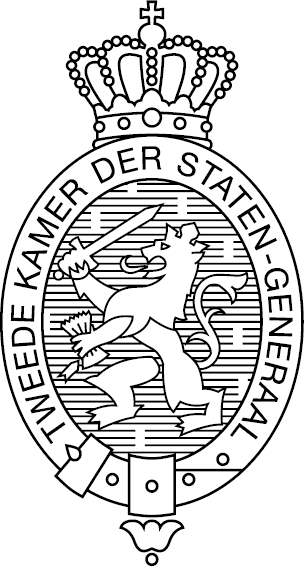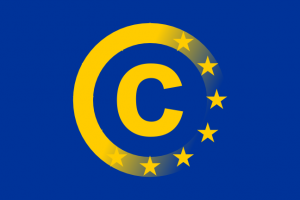De uitweg uit het juridische moeras bij gemeenschappelijk auteursrecht
 Bijdrage ingezonden door Heleen Maatjes en Diederik Donk, The Legal Group – Intellectueel Eigendom Advocaten.
Bijdrage ingezonden door Heleen Maatjes en Diederik Donk, The Legal Group – Intellectueel Eigendom Advocaten.
We komen steeds regelmatiger in aanraking met personen die hebben besloten om gezamenlijk software of een app te ontwikkelen. Dergelijke samenwerking gaat vaak van start als een “leuk project” van vrienden of kennissen. Daarbij wordt er veelvuldig gekozen om voor de ontwikkeling en de exploitatie van de software een Vennootschap onder Firma (V.O.F.) op te richten. In de praktijk leeft blijkbaar de gedachte dat daarmee de samenwerking nog een zeker informeel karakter houdt.
Het gevolg van de keuze om de ontwikkeling van software middels een Vennootschap onder Firma te realiseren, is dat er doorgaans sprake zal zijn van gezamenlijk auteursrecht op de software. Dit kan bij het einde van de samenwerking vrij desastreus zijn. Vennoten kunnen namelijk middels verbodsacties de exploitatie van de gezamenlijk ontwikkelde software door één van hen vaak met succes tegengaan, met alle commerciële gevolgen van dien.
Ondeelbaar werk
De middels een Vennootschap onder Firma ontwikkelde software zal in juridische zin zijn aan te merken als een ondeelbaar werk van meerdere makers, waarbij de individuele bijdrage van iedere maker niet meer te scheiden is. Er is dan sprake van een gemeenschappelijk ondeelbaar auteursrecht in de zin van art. 26 Auteurswet, waarbij geldt dat ieder der deelgenoten op het gezamenlijke auteursrecht tegen auteursrechtinbreuk door derden kan optreden.
In de praktijk gebeurt het echter vaak dat één van de vennoten van een Vennootschap onder Firma –na het een einde van een samenwerking – de exploitatie van de software zelfstandig wenst voort te zetten. Uit de toelichting bij artikel 26 Auteurswet blijkt echter dat de exploitatie van gemeenschappelijk auteursrecht in beginsel de instemming van alle betrokkenen behoeft.
Dit artikel is van aanvullend recht. De rechten en verplichtingen van de vennoten in dergelijke gemeenschap worden daarnaast beheerst door de bepalingen van “Gemeenschap” van het Burgerlijk Wetboek (titel 7). Daarbij wordt onderscheid gemaakt tussen gebruikshandelingen (artikel 3:169 BW) waarbij geen instemming van de andere vennoot c.q. deelgenoot is vereist en beheerhandelingen (artikel 3: 170 BW) waarbij dat wel het geval is.
Opmerkelijke uitspraken uit het verleden
Het is in commerciële zin uiteraard onwenselijk dat na het einde van een samenwerking een gezamenlijk auteursrechtelijk beschermd werk in haar geheel niet meer wordt geëxploiteerd. Dit verklaart wellicht dat in het verleden verbodsacties ter zake van de exploitatie van een gezamenlijk auteursrechtelijk beschermd werk door één van de deelgenoten door de rechter wel is toegestaan.
Zo heeft het Gerechtshof ’s-Hertogenbosch in 1995 uitgemaakt dat exploitatiehandelingen met betrekking tot een gemeenschappelijk geschreven boek onder de gebruikshandelingen zoals bedoeld in art. 3:169 BW[Hof Den Bosch 27 december 1994, NJ 1995,623] vallen, zodat naar het oordeel van het Gerechtshof iedere deelgenoot van een auteursrechtelijk beschermd werk in beginsel de bevoegdheid heeft om – zonder toestemming van de medeauteur(s) – het gezamenlijke werk te exploiteren.
Daarbij geldt dan wel als voorwaarde dat dit gebruik met de rechten van de overige deelgenoten te verenigen moet zijn. De exploiterende deelgenoot moet de overige deelgenoten bijvoorbeeld naar redelijkheid en billijkheid laten meedelen in de revenuen of exploitatiewinsten en de persoonlijkheidsrechten (bijvoorbeeld het recht op naamsvermelding) van de medeauteur(s) moeten worden gerespecteerd.
De uitspraak van het Gerechtshof waarbij de exploitatie door één van de deelgenoten wordt toegestaan, is rechtens wat mij betreft onjuist, maar staat niet op zichzelf. Het Gerechtshof Amsterdam[Hof Amsterdam, 4 mei 1996, LJN AY 4979, “Klussen & Wonen”] heeft ter zake van het door twee partijen ontwikkelde televisieprogramma “Klussen & Wonen” eveneens bepaald dat de exploitatie door één van hen door de andere deelgenoot niet kan worden verboden, omdat de samenwerking tussen de deelgenoten was geëindigd en partijen hadden afgesproken dat de producent het programma bij het uitblijven van een vervolgserie aan derden zou mogen aanbieden. Dat partijen tevens hebben afgesproken dat de auteursrechten 50/50 aan partijen zouden toekomen deed daaraan volgens het Gerechtshof niets af.
Een uitweg
Al met al geldt dat een verbodsprocedure bij gezamenlijk ontwikkelde software (of andere auteursrechtelijk beschermende werken) niet geheel risicoloos is. Daarnaast is het nog maar zeer de vraag of het realiseren van een verbod op exploitatie van gezamenlijke software in commerciële zin de meest wenselijke oplossing biedt. Dergelijk verbod zorgt er immers veelal voor dat de software door geen van de deelgenoten kan worden geëxploiteerd.
De ervaring leert dat deelgenoten niet in een (V.O.F.) overeenkomst hebben vastgelegd welke (exploitatie-) rechten de afzonderlijke deelgenoten zullen hebben bij het einde van de samenwerking. Dit betekent echter nog niet dat een deelgenoot is overgeleverd aan het voeren van een verbodsprocedure. In art. 3:168 lid 2 BW is immers bepaald dat de rechtbank – sector kanton – op verzoek een deelgenoot een regeling kan treffen ter zake van het gebruik, het genot en beheer van gemeenschappelijke goederen. Daarbij zal naar redelijkheid en billijkheid rekening worden gehouden met de belangen van partijen en het algemeen belang. Deze regeling zal naar mijn mening in commerciële zin voor partijen veelal een betere oplossing bieden. Dat van deze regeling in de praktijk bij gezamenlijk auteursrechten weinig gebruik wordt gemaakt is moeilijk te begrijpen. Wellicht dat juristen de uitweg uit het geschetste juridische moeras nog niet hebben kunnen vinden.
Helen Maatjes en Diederik Donk
 In uw brief (...) verzoekt u mij een pauze in te lassen in de behandeling van het wetsvoorstel auteurscontractenrecht. RODAP wil die pauze benutten om overeenstemming te bereiken over een alternatief voor een onderdeel van het wetsvoorstel, te weten het voorgestelde artikel 45d Auteursrecht. U geeft aan dat de pauze tevens kan worden gebruikt om de juridische consequenties te verwerken van het in 2013 verwachte arrest van de Hoge Raad inzake Norma vs NL kabel en het richtlijnvoorstel inzake collectief beheer.
In uw brief (...) verzoekt u mij een pauze in te lassen in de behandeling van het wetsvoorstel auteurscontractenrecht. RODAP wil die pauze benutten om overeenstemming te bereiken over een alternatief voor een onderdeel van het wetsvoorstel, te weten het voorgestelde artikel 45d Auteursrecht. U geeft aan dat de pauze tevens kan worden gebruikt om de juridische consequenties te verwerken van het in 2013 verwachte arrest van de Hoge Raad inzake Norma vs NL kabel en het richtlijnvoorstel inzake collectief beheer.
 Een redactionele bijdrage van Theo Stockmann,
Een redactionele bijdrage van Theo Stockmann,  New business models in the digital environment
New business models in the digital environment  Via IViR.nl:The internet has proven a convenient vehicle for the commission of unprecedented levels of copyright infringement by leagues of anonymous – and impecunious – infringers. In their quest for deep pockets and easy targets, right-holders have, in reaction, turned against the internet middlemen, attempting to hold them accountable for the wrong-doings of the small-scale offenders using their networks. As a result, the tricky issue of indirect liability has been given new urgency. With perplexed domestic courts turning to the general rules on extra-contractual liability to parse the issue, during the 90s a number of EU Member States started introducing special liability laws in order to shield the budding internet industry from legal uncertainty. (...)
Via IViR.nl:The internet has proven a convenient vehicle for the commission of unprecedented levels of copyright infringement by leagues of anonymous – and impecunious – infringers. In their quest for deep pockets and easy targets, right-holders have, in reaction, turned against the internet middlemen, attempting to hold them accountable for the wrong-doings of the small-scale offenders using their networks. As a result, the tricky issue of indirect liability has been given new urgency. With perplexed domestic courts turning to the general rules on extra-contractual liability to parse the issue, during the 90s a number of EU Member States started introducing special liability laws in order to shield the budding internet industry from legal uncertainty. (...) Uit de Executive Summary: The exclusive right of “making available” under the WCT and the implementing EU legislation covers the offering to the public of a work for individualized streaming or downloading; in addition, where it takes place, the actual transmission of a work to members of the public also is covered, both irrespective of the technical means used for making available. In essence, what matters is that the act (i) is performed by an individual person (ii) directly or indirectly has the distinct effect of addressing the public, irrespective of the tool used by the individual, and (iii) concerns subject matter protected by copyright or related rights.
Uit de Executive Summary: The exclusive right of “making available” under the WCT and the implementing EU legislation covers the offering to the public of a work for individualized streaming or downloading; in addition, where it takes place, the actual transmission of a work to members of the public also is covered, both irrespective of the technical means used for making available. In essence, what matters is that the act (i) is performed by an individual person (ii) directly or indirectly has the distinct effect of addressing the public, irrespective of the tool used by the individual, and (iii) concerns subject matter protected by copyright or related rights. Douane. Beslag. Namaak (‘counterfeiting’) en productpiraterij plegen voor de civiele rechter – en in extreme gevallen ook strafrechtelijk – bestreden te worden. Minder bekend maar zeker niet minder belangrijk is de rol van de douane bij de namaak- en piraterijbestrijding. Op grond van de zogeheten Anti-Piraterij Verordening (Verordening 608/2013 van 12 juni 2013, die in de plaats is gekomen van
Douane. Beslag. Namaak (‘counterfeiting’) en productpiraterij plegen voor de civiele rechter – en in extreme gevallen ook strafrechtelijk – bestreden te worden. Minder bekend maar zeker niet minder belangrijk is de rol van de douane bij de namaak- en piraterijbestrijding. Op grond van de zogeheten Anti-Piraterij Verordening (Verordening 608/2013 van 12 juni 2013, die in de plaats is gekomen van  Bijdrage ingezonden door Gerard Lieverse, Secretaris
Bijdrage ingezonden door Gerard Lieverse, Secretaris 
























































































